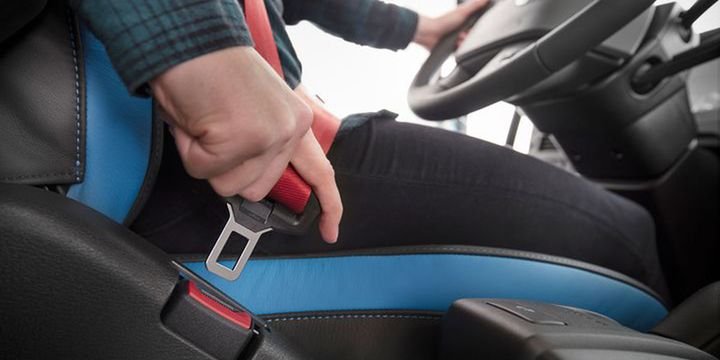File Photo: Volvo
Corporate safety messaging should include frequent seat belt reminders, says CalAmp’s VP of Product Line Management Kinana Hussain.
Fleet safety is a hot topic––for good reason. For fleet managers, accidents can turn into million-dollar losses that have the potential to threaten their organization’s bottom line and permanently damage its reputation. On the other hand, stellar safety saves money, improves business reputation, boosts morale, and preserves lives.
Implementing an effective fleet safety program is the first step to reaping these benefits. But these programs aren’t “set it and forget it.” They require the same essential care and attention fleets give their vehicle maintenance.
Below are seven key elements that an effective fleet safety program should have. How does yours stack up?
1. A clear, written safety policy
A written fleet safety policy provides a baseline of expected behavior that helps drivers maintain safety with clear-cut rules. However, it shouldn’t be limited to the basics of operations.
Written fleet safety policies should be comprehensive and explain the goals of management, provide guidelines for daily operations, and outline procedures in the event of an accident. They should be actively observed and continually reviewed to address any new regulations or circumstances. Many insurance companies provide fleet safety program templates.
2. Comprehensive and continuous driver training
Driver coaching is the backbone of any fleet safety program, and ideally, it never stops. Regular coaching can break unsafe driving habits like speeding, harsh braking, hard cornering and tailgating.
3. Frequent safety messaging
A strong safety policy is just the first step in communicating what’s expected. To continuously keep safety top of mind, use persistent messaging in meetings, emails, newsletters, and fliers to highlight the value of specific safety practices and to offer specific tips and reminders to keep in mind while on the road.
4. A robust seat belt campaign
When learning to drive, the first thing that’s taught is to always wear a seat belt. Yet, almost half of all driver fatalities are due to speeding and the failure to wear one. Those accidents pose a major threat to driver health and overall costs to operations.
At a minimum, corporate safety messaging should include frequent seat belt reminders. Fleet telematics solutions also provide an additional layer of security by allowing managers to configure alerts when a driver is operating a vehicle without a seat belt.
5. A distracted driving program
There are no winners when a distracted driver hits the road. It’s easy to set a no phone or texting policy, but the temptation to make a quick call or text can be strong enough to pull a driver’s attention away from the road.
Fleet managers should consider driver-facing cameras to identify drivers who can’t keep their hands off their phones while driving, especially for those with low safety scores. The data captured from these cameras can be used to customize driver coaching and curb other forms of distracted driving.
6. A preventative maintenance plan
Well-maintained vehicles equal safer vehicles. Routine vehicle inspections help prevent unplanned vehicle breakdowns and are an important component of an effective and well-oiled fleet safety program.
7. Safe driver recognition
One of the best ways to maximize the impact of your fleet safety program is to introduce driver performance rewards—bonuses, gift cards, time off, or other incentives that are awarded to your safest drivers. It can be even more effective for drivers who aren’t meeting safety standards to see other drivers being rewarded for safe actions. Managers can work with underperforming drivers to set clear and achievable goals so that they, too, can earn good driver scorecard marks and become models for others.
Vehicle telematics can assist with tracking many of these elements of a safety program. For example, a telematics platform can provide a dashboard for tracking maintenance needs and scheduled inspections, and if a system has in-cab video capabilities, it can also help managers address driver behaviors.
Video can help drivers visualize their behaviors, like dangerous driving violations, not wearing a seat belt or using a cell phone, and make training more effective.
by By Kinana Hussain, CalAmp
Source: https://www.truckinginfo.com/





